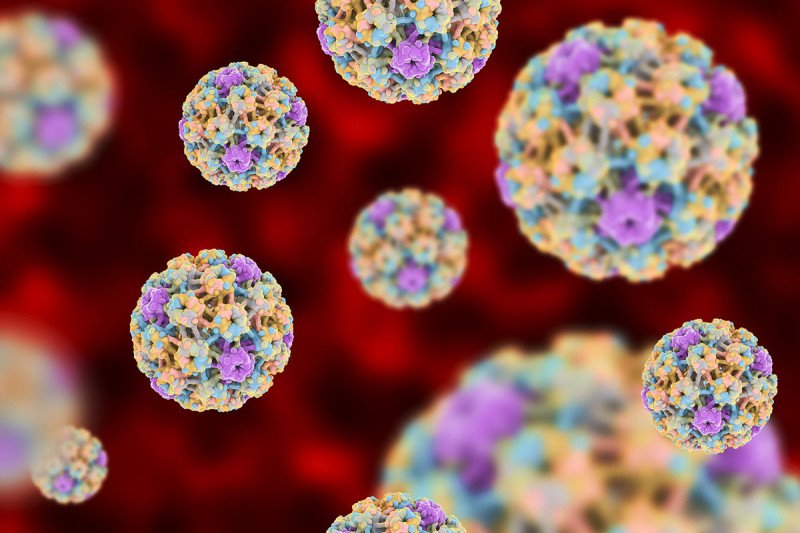
Infection with the human papillomavirus is a preventable cause of cancer.
Human papillomavirus (HPV) causes several types of cancer, including cervical, anal, and head and neck cancers. People with these tumors are more easily cured with radiation and chemotherapy than people with tumors not caused by HPV. Scientists at Memorial Sloan Kettering now think they understand why.
“We’ve known that HPV-associated cancers respond much better to radiation therapy, but it hasn’t been clear why that is,” says Daniel Higginson, a physician-scientist at MSK. “Our research shows that it’s likely because the virus alters the cells’ normal DNA repair machinery.”
Radiation therapy damages DNA. Cancers caused by HPV are less able to repair this damage and so they die.
The difference in cure rates between HPV-caused and non-HPV-caused cancers is stark: 85% to 90% of patients with HPV-associated oropharyngeal cancer (which affects the middle part of the throat), for example, are cured by radiation and chemotherapy, compared with about 60% of people with non-HPV-caused oropharyngeal cancer.
“We don’t have many biomarkers that predict response to radiation therapy,” says Dr. Higginson. “But HPV is a very good one and is consistent across multiple malignancies.”
What the Virus Does
HPV promotes cancer by inserting pieces of its own DNA into a person’s cells. The DNA pieces trick the human cells into making two distinct proteins that cooperate to turn normal cells cancerous. These proteins (called E6 and E7) disrupt the cells’ machinery for stopping unwanted growth (specifically, two proteins called p53 and Rb).
When this machinery is disabled, the cells begin to divide without restraint. They also tend to accumulate mutations because DNA damage goes unrepaired. Eventually, the cells have enough additional mutations to turn cancerous.
Tricking the cells into dividing repeatedly is advantageous to the virus because this is how HPV reproduces itself; each time a host cell divides it makes more of the virus.
Previous research had pointed to faulty DNA repair as a possible reason why HPV-caused cancers are more sensitive to radiation. But there are several types of DNA repair — which one might be involved was an open question.
Homing in on DNA Repair
To get to the bottom of these questions, the researchers first looked for evidence of different types of DNA repair in more than 10,000 tumors across 32 cancer types in data sets from The Cancer Genome Atlas. They discovered that HPV-caused cancers have DNA changes more characteristic of a repair process called microhomology-mediated end joining (MMEJ). This form of DNA repair is a backup system that comes into play when other repair systems fail, but it is prone to making errors.
The researchers then turned to laboratory experiments. By introducing DNA breaks into HPV-infected cancer cells and measuring how these breaks were repaired, the MSK scientists confirmed that HPV (specifically the E7 protein) suppresses a form of DNA repair called canonical nonhomologous end joining. As a result, the cells become more dependent on MMEJ.
Why might HPV prefer this form of less-than-accurate repair? Some evidence suggests that MMEJ helps the virus integrate its DNA into the host cell’s DNA.
Dr. Higginson says that looking for biomarkers of MMEJ dependence in cancers may help doctors tailor treatments to those who may benefit from them the most. In addition, the findings provide a rationale for exploring ways to block MMEJ factors with drugs in HPV-caused cancers. These results were published October 7, 2019 in the journal Proceedings of the National Academy of Sciences.
Cancers caused by HPV constitute about 4.5% of all solid tumors. A vaccine to prevent infection with the most dangerous HPV strains is available.




